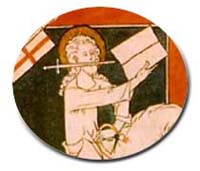 |
Forgotten Truths
By Rebelling against the Obligations of His Charge, a Pope Falls into Schism
TIA brings today to our readers a text by Card. Charles Journet commenting on an opinion of Fr. Thomas Cajetan, OP, (1469-1534). The later affirmed that a Pope who rebels against the obligations of his charge and refuses to provide the Church with the spiritual orientation she has the right to receive from him, incurs schism.
We wonder whether this is the case of Francis who refuses to use the symbols and titles of the Papacy. He is also replacing the spiritual care the faithful should receive from him with an ecological care.
Card. Charles Journet (1891-1975)
“1. The theologians of old (Torquemada, Cajetan, Banez), who thought, in agreement with the Decree of Gratian (part I, dist. XV, c. IV), that the Pope, infallible as Doctor of the Church, could however personally sin against faith and fall into heresy (see L’Eglise du Verbe Incarne, t. I, p. 596), admitted with greater reason that the Pope could sin against charity, even in the measure that the latter constitutes the unity of the ecclesiastical communion, and thus he would fall into schism (1).
“The unity of the Church, according to what they say, subsists even when the Pope dies. Therefore, it could subsist also when a Pope falls into schism (Cajetan, II-II, q. 39, a. 1, n VI).
“They ask themselves, however, in what manner can the Pope become schismatic. For he can separate himself neither from the head of the Church, that is, from himself, nor from the Church, for where the Pope is, there is the Church.
“To this Cajetan responds that the Pope could break the communion by ceasing to comport himself as the spiritual head of the Church, deciding, for example, to act as a mere temporal prince. To save his liberty, he would flee thus from the duties of his charge; and if he did this with pertinacity there would be schism (2). As for the axiom “where the Pope is, there is the Church,” it holds when the Pope comports himself as Pope and head of the Church; otherwise, the Church is not in him, nor is he in the Church (Cajetan, ibid.).
“2. It is said at times that the Pope, being unable to disobey, has only one gateway to schism (3). From the analyses which we are conducting, it results, to the contrary, that he also can sin against the ecclesiastical community in two ways:
- Breaking the unity of connection, which would suppose on his part the will to avoid the action of grace as far as it is sacramental,
and which brings into being the unity of the Church;
- Breaking the unity of direction, which would result, according to the penetrating analysis of Cajetan, if he rebelled as a private person against the obligations of his charge and refused to the Church (by trying to excommunicate the whole Church or simply by resolving, in a deliberate way, to live as a mere temporal Prince) the spiritual orientation which she has the right to expect from him in the name of One who is greater than he: that is, in the name of Christ and of God” (4).

(Arnaldo V.X. Silveira, The Theological Hypothesis of a Heretic Pope,
available
here, p. 180)
Posted on August 28, 2021



Related Topics of Interest
 By Departing from Traditional Worship,
a Pope Falls into Schism By Departing from Traditional Worship,
a Pope Falls into Schism
 By Subverting Traditional Ceremonies, a Pope Falls into Schism By Subverting Traditional Ceremonies, a Pope Falls into Schism
 How a Catholic Should Act Before Bad Popes How a Catholic Should Act Before Bad Popes
 When Does a Heretical Pope Become an Invalid Pope? When Does a Heretical Pope Become an Invalid Pope?
 Can a Pope Err in Doctrinal, Liturgical & Canonical Matters? Can a Pope Err in Doctrinal, Liturgical & Canonical Matters?
 The New Mass - A Flavor of Protestantism The New Mass - A Flavor of Protestantism
 Quo Primum vs. Novus Ordo Quo Primum vs. Novus Ordo
 Declaration of Resistance to the Vatican
Ostpolitik Declaration of Resistance to the Vatican
Ostpolitik
 Resisting the Novelties of the Conciliar Church Resisting the Novelties of the Conciliar Church

Related Works of Interest
|
Forgotten Truths | Religious | Home | Books | CDs | Search | Contact Us | Donate

© 2002-
Tradition in Action, Inc. All Rights Reserved
|
 |
|